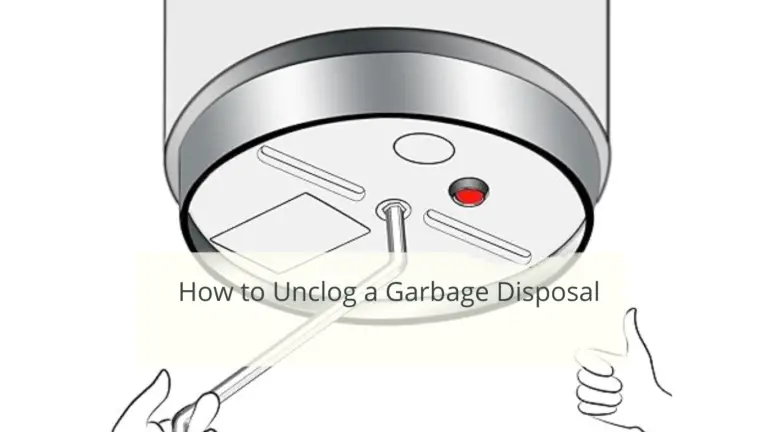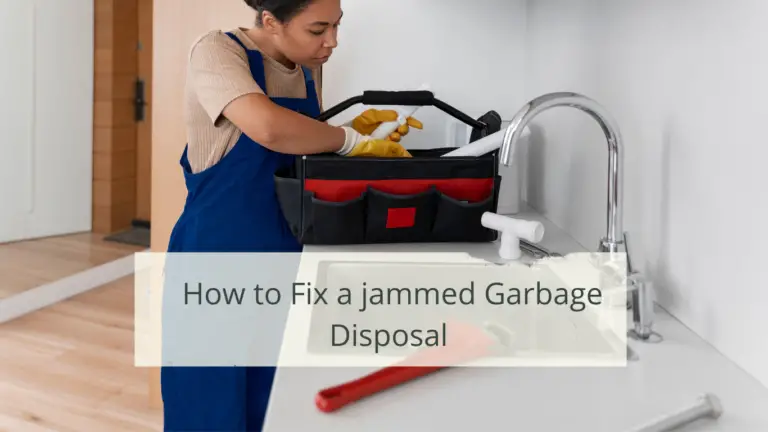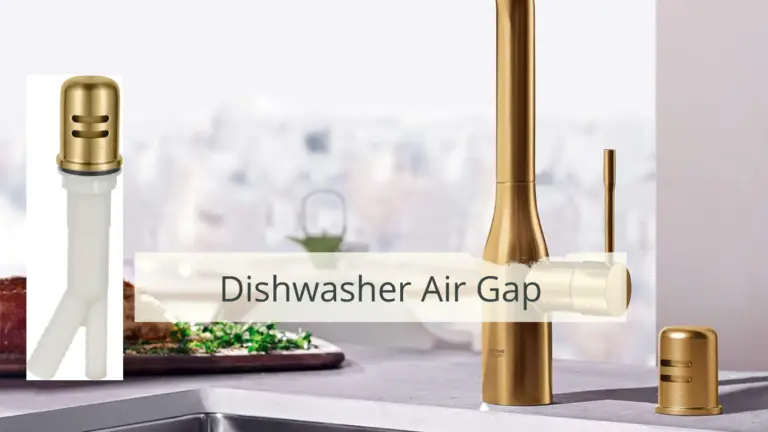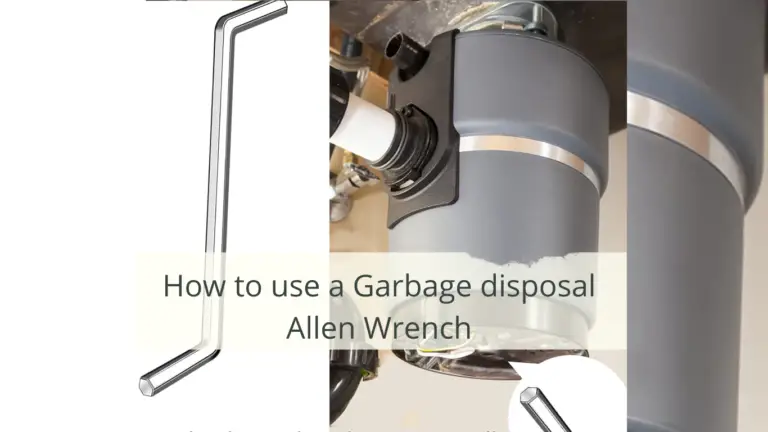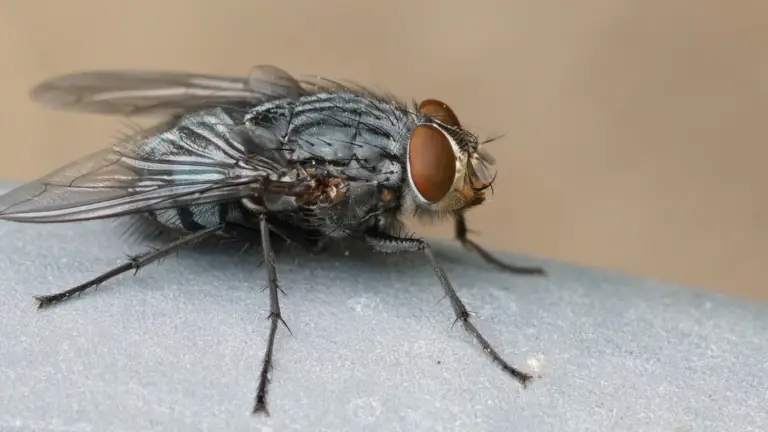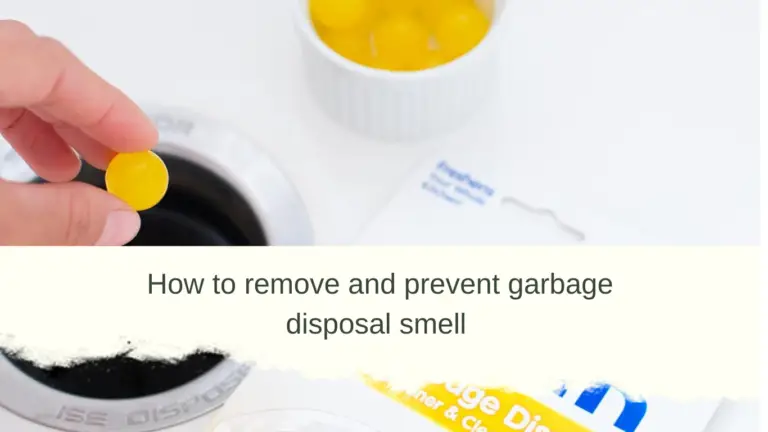How to fix loose garbage disposal blades
This post may contain affiliate links which means I may receive a commission for purchases made through links.

Garbage disposals are equipped with 2 metal teeth known as impellers that are installed over a metal plate. While these components are not actually blades, they’re also referred to as blades. This is because they slash up solid food waste into bits and pieces that are easy to flush out into the septic tank or drain pipes. Unfortunately, like any other mechanical components, these blades/ impellers can get loose over time, preventing them from grinding up food properly or even to malfunctions. For that, it’s important to give your garbage disposal proper maintenance from time to time, including fixing loose garbage disposal blades. But how do you go about it? How do you fix loose garbage disposal blades?
Take it easy! In this article, I’ll explain why garbage disposal blades become loose and how to fix the problem step-by-step.
Read on to find out!
Why do garbage disposal blades get loose?
First of all, a garbage disposal is a mechanical device that grinds out food scraps so that they can easily pass through the drainage pipe to the septic tank or sewer system. Therefore, for the disposal to work correctly, its blades must be secure. Otherwise, the grinding and draining will become impossible or difficult if they’re loose.
That said, here are some of the most common factors that might cause your garbage disposal blades to become loose;
- Age. As garbage disposals age, their blades usually become loose because of wear and tear.
- Heavy use. Constantly grinding up tough or large pieces of food scraps can cause the impellers to become loose.
- Damaged or worn-out mounting bolts. Over time, the mounting bolts that hold the impellers in place can become damaged or worn out, causing the garbage disposal blades to become loose.
- Improper installation. If the garbage disposal blades were not installed properly, they might loosen over time.
Step-by-Step Guide on how to fix loose garbage disposal blades
Step 1: Unplug the garbage disposal
The first step in troubleshooting your garbage disposal is to unplug it from the power source to avoid accidental running. In most cases, the power outlet is located below the sink, on the wall next to the disposal unit.
However, The disposal can also be connected directly to the switch. If that’s the case, turn off the power to the unit by switching off its circuit breaker to break the power from the kain circuit.
Step 2: Diagnose the garbage disposal problem
After unplugging the device from the power outlet, the next step is to check if loose garbage disposal blades are the problem. Generally speaking, if the garbage disposal is not working as effectively as it usually does, there is a good chance its blades are loose.
However, there are other ways to determine if loose garbage disposal blades are the cause of the problem. Some of these signs are;
- A rattling or loud grinding noise when running the garbage disposal.
- A foul smell coming from the disposal unit.
- A blocked kitchen sink because of loose blades failing to grind food waste effectively.
Step 3: Gather the necessary tools
Now that you’ve ascertained that the loose disposal blades are loose, you need to gather a few essential tools and supplies before you can fix the problem/ These include;
- Garbage disposal Allen wrench/ ¼” Allen key. Most garbage disposal models come with a customized Allen wrench that you can use to loosen the impellers.
- Flashlight. A flashlight allows you to see inside the garbage disposal clearly.
- Safety gloves. Garbage disposals contain sharp parts that can cut you while trying to fix loose blades. For that, it’s important to wear safety gloves when repairing the device to reduce the risk of cutting yourself.
- Kitchen towel. An old rag or kitchen towel comes in handy when fixing loose blades since working on garbage disposal can be messy.
- Nut driver. A screwdriver or nut driver will allow you to tighten the nuts or screws around the garbage disposal blades.
- Broom. A wooden broom handle will help you to dislodge stubborn clogs that are difficult to remove with an Allen wrench.
- Pliers. A pair of pliers is safer than using your hand to remove objects that might be jamming your garbage disposal.
- Pipe wrench. A pipe wrench is an essential tool for loosening the garbage disposal unit from the kitchen sink.
Step 4: Check for stuck objects inside the garbage disposal
Use a flashlight to check if there is any object stuck inside the unit’s grinding chambers. Sometimes, the problem can be caused by a tough food item like bone or foreign objects like spoons or forks. Such items can loosen up the garbage disposal blades or even damage the grind ring and impellers.
If you notice a hard bone or foreign object inside the unit, use a pair of tongs or long-nose pliers to pick it up. Then use a long screwdriver to nudge the impellers and see if they seem loose and wiggly. If the blades wiggle, you need to tighten up their nuts/ screws.
Step 5: Disconnect the garbage disposal from the kitchen sink
Now that you have determined that the garbage disposals are indeed loose, you need to tighten them. However, you need to uninstall the garbage disposal from the kitchen sink first. So, use a pipe wrench to unscrew all the connections underneath the kitchen sink that are connected to the disposal unit, including nuts, screws, pipes, and hoses.
Step 6: Tighten the loose garbage disposal blades
Disassemble the bottom and middle sections of your garbage disposal until you see the screws holding up the impellers. However, the disassembling process will vary from one model to another since some units only have one chamber without the bottom part.
With that in mind, locate the rotating impeller plate that moves the garbage disposal blades and use a drive nut to tighten the rivets around them. Once you’re done, rotate the impellers manually to see if they’re tight enough. If the blades cannot move up and down anymore, you have successfully tightened them.
Step 7: Reinstall the garbage disposal
After tightening the blades, reconnect your garbage disposal unit to the kitchen sink, either using a pipe wrench or Allen key. Make sure you attach the disposal unit to the mounting assembly firmly to prevent it from vibrating during use, which can cause the nuts to loosen again.
Step 8: Restore power back to your garbage disposal
Lastly, plug the garbage disposal unit back into the wall outlet underneath the kitchen sink and turn on its circuit breaker switch. To check if the unit is working properly, throw a few ice cubes down its grinding chamber and turn it on. If the blades are tight enough, they will crush the ice cubes easily and effectively.
However, if they’re still not working as they should, contact a professional or replace the blades.
Conclusion
The job of garbage disposal blades, otherwise known as impellers, is to toss food waste against the shredder, which then grinds them up to finer particles. Moreover, the impellers rotate in reaction to the rotation of the rotor to create additional launching force. Over time, these impellers may become loose, affecting the unit’s ability to get rid of food waste effectively. But as you’ve seen, fixing loose garbage disposal blades is a relatively simple task. Alternatively, you can consider replacing the entire garbage disposal instead of fixing loose blades, especially if the unit is too old.

